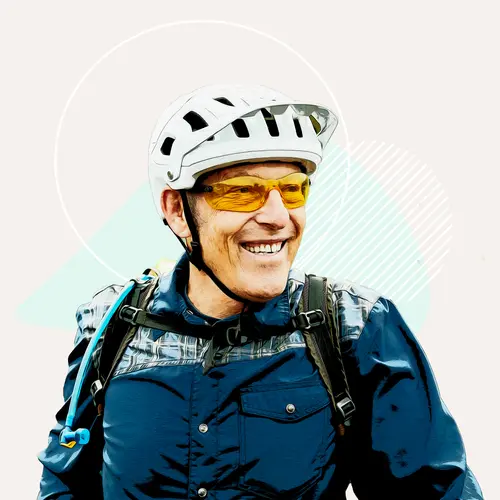Heeling is a cross between walking and roller skating. Once you've mastered the skill, you can effortlessly switch between the two. While heeling can be a great way to have fun and stay active, you should follow the same safety precautions you would if you were wearing traditional roller skates when you use them to avoid injuries.
What Are Heelys?
Heelys are shoes with built-in wheels at the heel of the shoe. You can walk or skate in them. They're also called roller shoes or street gliders. Heelys are appealing to many kids because they can switch between walking or running and skating without changing their shoes. They can also skate in places they normally wouldn't be allowed to since roller shoes look like traditional shoes.
Are Heelys Safe?
If you follow the recommended safety guidelines, Heelys are as safe as any other rolling equipment, like roller skates or skateboards. But children who use Heelys are less likely to wear appropriate safety gear, like helmets and wrist guards.
Many injuries happen when kids are first learning to use Heelys. Broken wrists, leg, and arm bones, elbow dislocations, and foot and ankle injuries are common injuries children sustain on Heelys. Most of these accidents happen outside when children fall forward or backward while shifting their weight or balancing on the wheels.
How Do Heelys Work?
Roller shoes have a wheel secured into a wheel bracket placed in the heel of the shoe. You glide on the wheels by lifting your toes so that only the wheel is in contact with the ground. When you're learning how to use Heelys for the first time, stand close to someone or something you can grab if you start to lose your balance. Here are some more Heelys safety tips:
- Always wear a helmet and wrist guards when using Heelys.
- If you're going to be doing tricks and heeling fast, wear knee pads and elbow pads in addition to helmets and wrist guards.
- Before you start heeling, make sure the wheels are securely lodged in the wheel bracket.
- Don't attempt to heel with both feet side by side. Put one foot in front of the other for better balance.
- If you start to fall, put your toes back down and walk or run to regain your balance.
Benefits of Heelys
The biggest benefit of Heelys is they offer a fun way for kids to get the recommended amount of exercise — that's 60 minutes of moderate to vigorous physical activity for kids ages 6 to 17. Only 24% of kids get the amount of exercise they need. Regular physical activity in kids helps:
- Improve cardiovascular fitness
- Build strong muscles and bones
- Control weight
- Reduce symptoms of anxiety and depression
- Decrease the risk of developing diseases like cancer, heart disease, type 2 diabetes, and high blood pressure
Your children probably aren't getting as much exercise as you think they are, so finding ways to increase their physical activity is important. One study found that 80% of parents overestimate how much physical activity their children are getting, while 75% overestimate how vigorous their physical activity is. It's hard to figure out exactly how much exercise your child is getting and how intense it is — especially if your child isn't with you when exercising — but talking to your child about it can help.
Ask your child about their physical activity while they were away from you. If they had to stay indoors during recess or didn't have gym class, you can suggest going to the park before dinner to play and heel. Ask your child how they felt when they were exercising. If exercise doesn't make their heart beat faster or make them breathe harder, it's not vigorous exercise.
If your child enjoys heeling, it can motivate them to get more exercise. Some ways you can incorporate heeling into your family's physical fitness include:
- Let your child use their Heelys during an after-dinner walk.
- Take your child to a park where they can use their Heelys safely on smooth surfaces.
- Provide your child with the safety equipment they need.
- Be positive and encourage your child's interest in heeling.
- Encourage your child to go heeling with their friends instead of watching television or playing video games.
Risks of Heelys
Although injuries are the biggest risk associated with using Heelys, another problem is that they can negatively affect your gait. Walking in roller shoes causes increased forefoot and rear foot pressure on your child's feet. If your child is going to be wearing Heely's for an extended period of time, remove the wheels until they plan to use them. This will also prevent them from using them in unsafe areas and heeling while they aren't wearing the proper safety gear.
Since Heelys can be worn as regular shoes, you should follow the same guidelines when buying roller shoes as you would with traditional shoes, including:
- Have your child's foot measured before you buy shoes.
- Don't buy shoes that are too big because they could cause your child to trip and fall.
- Make sure the roller shoes you're buying have adequate support.
- Check to make sure your child hasn't outgrown their Heelys every three or four months.
When your child is using their roller shoes, they should follow standard skateboarding and skating safety precautions to avoid injuring themselves or others, including:
- Having adult supervision when they're first learning since that's when they're most likely to get injured
- Practicing basic skills such as slowing down and stopping at home before trying out the shoes in public places
- Only heeling on flat, smooth surfaces — avoiding rocky areas, hills, and curbs
- Not heeling in crowded spaces like stores or schools or in traffic

